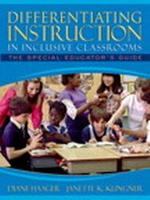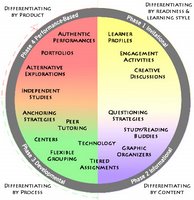Differentiating instructions for diverse learners


It is vital, when teaching diverse learners – students with special needs – to adapt, adjust, accommodate, modify and take into consideration the different learning styles of students, as well as thinking about strategies for teaching them.
For example, dealing with teaching vocabulary, it is best to providing multiple exposure to words, practice, focus on idioms and developing a word bank, as well as using visual organizers.
The learning environment in the classroom is important; for students with hearing impairment, they should sit where they can best hear what is being said, without any other noises to distract them. For hearing impaired students, seating is also important, as well as lighting and quality of visual aids general.
Here it must be stressed that, “One size does not fit all!” teachers should accommodate students by providing access to curriculum and instruction, although content should remain the same.
However, teachers can vary the amount of material covered, vary the format to
take into account students’ varying needs, supplement materials in more visual modes, for example, and use alternative materials where necessary and appropriate.
Differentiated between low and high impact accommodation: the former includes things like adjusting teaching methods, and implementing cooperative learning into classrooms, with the latter includes changes in curriculum design, and adjustments in the structure of educational programmes.
Dealing with individual students, it is necessary to determine whether a student’s problems come under “I can’t” or “I won’t”; changes in methods and materials should only be made when absolutely necessary.
Since there are cultural norms regarding people with special needs in any country, teachers should be alert to students who appear to have special difficulties, and be aware of students who may not have such needs.
Literature is available as well as websites to help teachers in what can be a difficult area of their profession: differentiating their instruction and their materials, goals and objectives while maintaining academic standards for all students enrolled on courses.
Robert Leslie Fielding

0 Comments:
Post a Comment
Subscribe to Post Comments [Atom]
<< Home